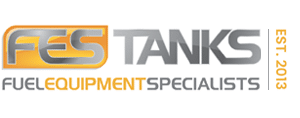Reducing Farm Fuel Costs – Tractor Tips for Broadacre Farmers
Broadacre farming is a fuel-intensive business. In fact, the fuel used to run farm vehicles represents more than one third of the energy consumed in the NSW agricultural sector (Energetics 2013).
If you’re a large-scale farmer, you’ll know six figure fuel bills are common, and getting the greatest fuel efficiency from your farm vehicles is critical. The NSW Farmers farm Energy Information Program AgInnovators says for the average broadacre farmer in NSW, fuel costs are one of the top three direct cash costs.
Factors that influence fuel use can be as varied as the type of fuel used, equipment maintenance schedules, the machinery you use and how you buy, measure and store your fuel. AgInnovators says efficient operation and set-up of tractors can save broadacre farmers up to 15 per cent on fuel costs.
Choose your tractor carefully
Much of the information available when buying a tractor is geared to the US and European markets, so if you want to optimise your fuel efficiency it’s important to do some homework based on your operational requirements. The most important rule is to match your tractor horsepower to equipment or loads. Tractor expert Mark Francis says the area of power ratings requires serious professional advice. The key steps to estimating your tractor power needs are:
- Identify your priority critical field operation
- Estimate the time you will have to complete the priority task
- Fine the work rate (hectares per hour)
- Determine the width of the implement required
- Determine soil resistance
- Determine the power required at the drawbar
- Determine PTO power required
- Adjust for further considerations.
Buy the right tyres
Will you buy bias ply or radial ply tyres for your vehicle? Radial ply tyres were introduced in the 1940s and can make a difference of 6-14 per cent in traction, fuel efficiency and reduced wheel slippage. You should also consider tyre size. As a rule of thumb it’s a good idea to err on the side of the larger tyres that work for your machine and your operation, because this will allow you to maximise traction and efficiency by employing a wider range of pressures.
Analysing performance – getting wheel slip right
Extras like a radar can be valuable tools in improving fuel efficiency. For example, a radar can help determine the tractor’s forward speed and compare it against tyre rotation, allowing you to better calculate wheel slip and make the most of performance.
On the paddock, wheel slippage helps realign soil particles and the right balance is important. Too much wheel slip uses more fuel and reduces tyre life. Too little will increase wear, reduce drive-train life and potentially waste fuel if there is too much ballast and the tractor is pulling excessive weight. The operator’s manual is a good guide here, and NSW Farmers also has an excellent information guide.
The tractor ballast balancing act
You can make great improvements to fuel efficiency by adjusting the weight of your tractor according to the task it’s performing. Standard weight distribution should be about 60-40, with 60 per cent of the weight on the rear axle. If you’re ploughing and are not getting the right wheel slip, adjusting the weight is critical to ensuring maximum fuel efficiency.
Get your tyre pressure right
Farm machines perform many different tasks and can operate under a wide range of loads, speeds and ground conditions. Inflating tyres to optimal pressure can make a huge difference to fuel inefficiency – up to 30 per cent. In general, tyre pressures should be lower in the paddock and higher on the road. Check your tractor manual to get your pressures right, and make sure staff get in the habit of adjusting. For a radial tyre, at least two tyre lugs should be firmly in contact with the ground.
Use adaptive Driving
In Europe, research has shown using methods like gear up, throttle down make a huge difference. Proper gear selection and throttle operation can save you up to 20 per cent in fuel efficiency. Basically, gear up throttle down means using the highest gear the machine will allow without overloading the engine, and decreasing the throttle. This is particularly effective when the tractor is underloaded. The tractor should be running at 80 per cent load for maximum efficiency.
Modern diesel engines are most efficient between 1400 and 1800 rpm. It’s a good idea to run the engine at around 1600 for best results.
Maintain, maintain, maintain
A solid program of preventative maintenance can save a world of hurt. Be sure to maintain a schedule that includes lubricating grease fittings daily, draining and refilling the transmission every 100 hours, replacing the fuel filter every 500 hours, changing the crankcase oil and filter every 100 hours, checking belt tension every 250 hours, checking batteries and checking and adjusting brakes monthly.
Document your tractor fuel efficiency
Make a fuel management plan – basically this means answering the when, where and what of fuel usage. Good fuel use records can help keep track of fuel use on different jobs or under different conditions.
Litres per hectare is the key measure when costing production of your crop.
Electronic fuel management systems can help you monitor and note when there are changes in fuel efficiency. Ideally, you should take note of factors including date of use, time elapsed, where the work was completed and over what area and amount of fuel consumed.
It’s also important to record data and keep receipts for fuel deliveries, keep log books for your tanks and ensure gauges are in good working order. Keeping accurate records helps minimise the risk of theft and aid early identification of leaks.
Get your storage right
In the past, the cost of purchasing compliant fuel storage tanks and installing bunding to ensure compliance with state regulations has made large-scale fuel storage cost-prohibitive for some farmers. Keeping tanks clean and maintained to protect fuel integrity has also been an issue. Fortunately, new products including fully-transportable self-bunded tanks not only make it possible to change your refuelling location depending on the job, but also dramatically reduce the cost of being environmentally compliant.
Ask the experts at FES about the right tank and pump options for your business.




1 Comment
Great experience
Comments are closed for this article!